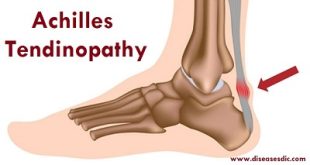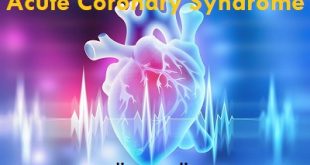Introduction
Athlete’s foot is a common foot infection caused by infection with certain types of fungi, called dermatophytes—these are the same fungi that cause ringworm and jock itch. Dermatophytes grow best in moist, damp places, which is why infection commonly spreads in the shower areas of gyms and swimming pools. Active people who wear tight, thick socks and heavy shoes are at increased risk of getting this infection, especially in hot weather. Athlete’s foot is more common in teens than in younger children.
What does it look like?
- The feet become itchy and tender, especially in the spaces between the toes. One or both feet may be affected.
- Peeling and cracking of the skin occur between and under the toes and on soles of the feet. Unpleasant foot odor may occur.
- Sometimes, especially in younger children, blisters and pustules (pimples) develop.
- If the infection is present for a long time, the bottom of the foot may become thickened and scaly.
How is Athlete’s foot transmitted?
- Direct contact with the infected area
- Indirect contact through contaminated surfaces such as gym change rooms and shower areas
- The infection can also be spread from one site on the body to other sites. Tinea pedis can spread to the groin (tinea cruris) or scalp (tinea capitis). Dermatophytes especially like to live in moist, warm areas of the body or on the scalp.
History
In ancient times, athlete’s foot was attributed to insect bites. (In medical Latin it’s called tinea pedis, or foot larvae.) However, in the 19th century a team of scientists discovered that microorganisms were responsible! Although a variety of fungi can cause foot rashes, Trichophyton mentagrophytes cause the itchy, cracked skin typically found between the fourth and fifth toes.
Epidemiology
- Frequency: Tinea pedis is thought to be the world’s most common dermatophytosis. Reportedly, 70% of the population will be infected with tinea pedis at some time.
- Race: Tinea pedis has no predilection for any racial or ethnic group.
- Sex: Tinea pedis more commonly affects males compared with females.
- Age: The prevalence of tinea pedis increases with age. Most cases occur after puberty. Childhood tinea pedis is rare.
Athlete’s Foot Causes
Dermatitis affecting the foot can be caused by contact allergens, irritants, sweat and rash (intertrigo), poorly fitting shoes, psoriasis, and interdigital bacterial toe web infections, and fungal infections.
- Fungi (either yeasts or molds) cause athlete’s foot.
- Tinea pedis is most commonly caused by Trichophyton rubrum (60%), by Trichophyton mentagrophytes (20%), and by Epidermophyton floccosum (10%); more rarely by Microsporum canis, Trichophyton tonsurans and by other dermatophyte species, with differences by geographic area and by age of the patient.
- These fungi can be contracted by sharing the shoes or socks of an infected person.
- They need a warm moist environment to flourish and can be found growing on the floors of locker rooms and public showers and in swimming pools and whirlpools.
- Athlete’s foot seems to be relatively uncommon in humans who rarely wear closed shoes. It is most common is older adult
Risk factors
You are at higher risk of athlete’s foot if you:
- Are a man
- Frequently wear damp socks or tightfitting shoes
- Share mats, rugs, bed linens, clothes or shoes with someone who has a fungal infection
- Walk barefoot in public areas where the infection can spread, such as locker rooms, saunas, swimming pools, communal baths and showers
Symptoms associated with Athlete’s Foot
Athlete’s foot is a fungal infection which affects the outer layers of the skin and nails and which can occur in any age group. It may have some or all of the following symptoms:
Skin
- Red or raw looking skin, which is often itchy.
- Cracking, peeling or scaling of the skin between the toes.
- White and soggy skin, especially between the fourth and little toes.
- Sore, fluid filled, or weeping rash.
- Small spot like blisters on one or both feet.
- A dry scaly rash on the bottom and sides of the feet.
Nails
- Thickening of the affected nail.
- Discolouration – yellow or brown appearance.
- Deformity- oddly shaped nail which may separate from the skin at the free edge.
- Lack of growth.
- Discomfort or minor pain
Complications
- Your athlete’s foot infection can spread to other parts of your body, including:
- Your hand. People who scratch or pick at the infected parts of their feet may develop a similar infection in one of their hands.
- Your nails. The fungi associated with athlete’s foot can also infect your toenails, a location that tends to be more resistant to treatment.
- Your groin. Jock itch is often caused by the same fungus that results in athlete’s foot. It’s common for the infection to spread from the feet to the groin as the fungus can travel on your hands or on a towel.
Diagnosis and Test
- Is made most often by history and clinical presentation
- A skin lesion potassium hydroxide (KOH) exam is the most common test for athlete’s foot. A doctor scrapes off a small area of infected skin and places it in potassium hydroxide (KOH). The KOH destroys normal cells and leaves the fungal cells untouched so they are easy to see under a microscope.
- A fungal culture can be done also, though usually isn’t due to the length of time needed to get results.
- Chronic tinea pedis can look like eczema or psoriasis
How to treat Athlete’s foot?
The following over-the-counter creams can be used to provide symptom relief and treat Athlete’s foot. These creams need to be applied once up to twice or as directed by your health care provider daily on clean and dry feet for up to 4 weeks including 1 to 2 weeks after the lesion has disappeared to prevent it from recurring.
- Clotrimazole 1% (Canesten Athlete’s foot cream)
- Miconazole nitrate 2% (Micatin) – available as a cream, spray and powder
- Tolnaftate 1% (Tinactin Cream) – available as a cream, spray, gel and aerosol
The side effects of these creams are very mild and rare. Some possible side effects include local skin irritation including itching and redness.
Topical antifungal medications for athlete’s foot are widely available over-the-counter (OTC). Topical means medication that is applied directly to the area being treated. It is usually down to personal preference as to which form of antifungal medicine you use. Ask your pharmacist which antifungal medicine would be most suitable.
Types of antifungal medicine available include:
- Terbinafine
- Econazole
- Ketoconazole
- Sulconazole
Different types of oral antifungal medicines are also available. These need to be prescribed by your GP and include:
- Itraconazole
- Griseofulvin
- Terbinafine
Oral antifungal treatment is only recommended for severe cases of infection and if topical antifungal treatment has not worked. Oral medication is suitable for adults but not for children under 16 years of age.
Prevention
- Wash your feet daily with soap and tepid water.
- Dry your feet thoroughly paying particular attention between the toes.
- Choose hosiery made from natural fibres which allows moisture to evaporate.
- Change your socks or hosiery daily.
- Do not share towels, socks or shoes.
- Wear well-fitting shoes or sandals, which allow the air to circulate.
- Choose shoes made from a natural fibre such as leather which allow the feet to breathe.
- Paint surgical spirits in between your toes daily with a cotton bud and allow to evaporate and dry.
- Do not use surgical spirits if it ‘stings’.
- If you are applying cream for your skin infection or treatment to the nails, it is important to treat all your shoes or slippers with an antifungal powder or spray and wash socks well, preferably a hot wash.
- A number of different organisms can cause fungal infection, which can appear in varying levels of severity on the skin and nails.
- Footwear creates an ideal environment for fungal growth by keeping feet warm and trapping moisture between the toes.
- This fact coupled with the use of communal facilities such as sports changing rooms, results in the effective spread of fungal infections.
 Diseases Treatments Dictionary This is complete solution to read all diseases treatments Which covers Prevention, Causes, Symptoms, Medical Terms, Drugs, Prescription, Natural Remedies with cures and Treatments. Most of the common diseases were listed in names, split with categories.
Diseases Treatments Dictionary This is complete solution to read all diseases treatments Which covers Prevention, Causes, Symptoms, Medical Terms, Drugs, Prescription, Natural Remedies with cures and Treatments. Most of the common diseases were listed in names, split with categories.








i av this infection more than 5years now, please can you recommend the best treatment for me. thanks
The most thing you should follow daily is you should not use fully closed shoes. Allow some air to pass through into your shoes.
Don’t make your foot wet frequently. Follow the anti fungal creams daily until u recover from the disease.
This apps provide great knowledge about disease and treatment… 🙂
Its too good
it’s really good. its detail about the disease is really awesome. thanks to the creator of the lovely aap.
l’av this problem for ten years ,what can I do ?
Please consult a doctor to avoid complications. Also, follow the preventable points given in the post.
I have this infection for years. please give me the best treatment cream i can use. Thanks
Please go through the treatment section in post, we have mentioned some of the best creams for athlete’s foot.
I have a terrible irritation on my feet
Consult a doctor to get diagnosed and treatment
I have that itching for long what can I do?
consult a doctor to get treated
I have this athlete foot now close to three years..it has
affected me and my work I have tried some creams and powder but nothing.
Please follow the preventive measures and treatment steps that have mentioned in the post.
I have this infection almost 4 years now, can u pls recommend me the best treatment
Please follow the preventive measures that are given in the post.
This is very interesting and aside from that, the App has really helped me in treating my patients. thank you.
I HAVE THIS INFECTION FOR YEARS NOW AND MY LAST LEFT SMALL TOE HAS BECOME BIG. I FEEL HOT AND PAIN AT TIMES.PLEASE RECOMMEND.
The following over-the-counter creams can be used to provide symptom relief and treat Athlete’s foot.
Clotrimazole 1% (Canesten Athlete’s foot cream)
Miconazole nitrate 2% (Micatin) – available as a cream, spray and powder
Tolnaftate 1% (Tinactin Cream) – available as a cream, spray, gel and aerosol
I have been with this disease since my childhood and I have used some creams but still it can’t go up to now .Is it possible for me to gain back my normal skin or it is too late now? What do you think can work best for me since mine has taken that long?
mostly avoid wet conditions and make your skin to be in dry condition. consult a doctor to get a permanent cure.
can we use all the prescribed cream or we should choose one out of them?
please consult a doctor before use out of them.
can athlete foot disease spread to the breast and abdomen.
No, it can’t spread there.
I have this disease between my fourth toe the last, between my 3rd and 4th finger for years, now I am seeing some reddish ringworm like rashes around my breasts and abdomen. I am equally pregnant what do I do
please consult a doctor as soon as possible.
I want to make this known to the world they playing around with athlete’s feet trying to make money with it whoever doing that is a nasty trifling person in should be put in a mental hospital psychiatric ward playing around with that stuff is nothing to be played stuff is nothing to be played with
and it goes it older wanted it got a real stinking molded dead odor smell make the smell like you’re dead if you don’t pay attention to it it don’t wash it for one day the next day it smells like something is has died the older of The Athlete’s Feet fungus smell like death
Please consult a doctor as soon as possible.
I av a similar problem with different symptoms. It is located at the back of the feet and the tip or around the toes and my palms, causing hardness . It doesn’t itch, it doesn’t pain. It just keeps spreading and makes the affected part very hard. It doesn’t affect any part of my skin except the hard part( that is the feet and the palm) Now it is spreading to the fingers because I use one razor at at time. Is this athlete foot or a a different disease? What drug is recommendable for me
for better results please consult a doctor.
I haven’t been able to get a hold of anyone who might be help
in this position but I am going to lose my feet so please let me know if you can help!.
Consult an orthopaedist for appropriate diagnosis and treatment.
Insightful and useful to me. I have the condition but I want to know, can it be perfectly cured?
Most cases of athlete’s foot can be cured with over-the-counter antifungal products and basic good hygiene. If not treated properly and promptly, athlete’s foot can be very stubborn. Even when treated with antifungal drugs, the infection may take several weeks to disappear and may come back after treatment.
is there an injection for athletes feet
If your athlete’s food fails to respond to over-the-counter medications, your physician will usually prescribe you prescription-strength versions of the same topical medications. These include: Lamisil (terbinafine) Spectazole (econazole)
what’s best and effective medicine for athlete foot?
Over-the-counter antifungal medications like Clotrimazole, Terbinafine, Miconazole, and Butenafine are commonly used and effective for treating athlete’s foot. These are available in various forms such as creams, ointments, sprays, or powders. Follow the product instructions, and if the condition persists, consult with a healthcare professional for further evaluation and potential prescription-strength antifungal medications. Practicing good foot hygiene is also important for prevention.